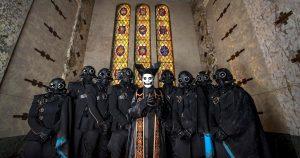The major problem
October 26, 2014
The academic offerings at Robert Morris University may be leading to lower female enrollment.
Despite recent efforts by the university to even out the percentage between male and female undergraduate students, the student body remains 56 percent male dominated. The ratio at RMU is backwards from the national average of 56 percent female enrollment.
“The reason I think that we have such a big difference between males and females on campus is because the majors RMU offers are more suited towards men,” said sophomore Brittnie Kohl.
Within RMU, there are five schools in which students can declare a major, with three of them being male dominated and two having more female enrollment.
The two schools that have more females enrolled than males are the two least populated out of all undergraduate programs which include, the School of Nursing and Health Science, with 624 total students currently enrolled, and the School of Education and Social Sciences, with 352 total.
The School of Nursing and Health Science is currently 85 percent female, while the School of Education and Social Sciences is 69 percent female.
“Sometimes it feels like we don’t get much attention because of how small our major is,” said Elizabeth Koslow, a sophomore nuclear medicine major. Koslow is one of the women on campus who has noticed that although her field of study is female dominated, it is also one of the smallest majors offered at the university.
The three largest programs at RMU, the Schools of Business (1,500 total students, 954 males), Communication and Information Systems (977 total, 589 males), and Engineering, Mathematics and Science (974 total, 763 males) are the other three schools, which are male dominated.
Several students and faculty members seem to believe that the popularity of these specific majors, compared to the other programs, may be a large contributor to the large percentage of males on campus.
“When you think of business, you think of the big business man, not the business woman,” said sophomore, Erica Cooper.
Women’s Leadership and Mentorship Program coordinator, Lauren Rauscher said, “There are probably a number of different reasons for that. Robert Morris started as a business school. We have a strong business school and a strong engineering school, and those are traditionally male dominated occupations, so we don’t have a lot of young women coming out of high school saying ‘I want to be a biochemical engineer.’”
According to the United States Department of Labor, education and nursing related fields are some of the most popular among women, just as they are on RMU’s campus.
The department’s most recent statistics from 2013 have shown that 81 percent of all elementary and middle school teachers are female. While secondary school teacher positions are not as dramatically female-dominated (57 percent), preschool and kindergarten teachers have the most skewed percentage, with 98 percent being female.
The Department of Labor’s statistics also reflected that about 90 percent of registered nurses and other health aids are female, which is a similar percentage to the ratio of females enrolled in the School of Nursing and Health Sciences at RMU.
While RMU’s student body currently has a larger percentage of male students, the administration has a plan in place to even out the ratio. In the 2007-2012 Strategic Plan, university representatives vaguely expressed hope to “increase the number of undergraduate female students.” The current five year Strategic Plan that began this fall expressed the desire to “increase the percentage of female students to 50 percent or more of undergraduate enrollment.”
“There’s a couple different discussions going on, and they fall into a couple different tracks. The first of them is the academic programs we offer. There’s discussion going on about ‘could there be other majors or programs of study that we might introduce here that may be more appealing to women,’” said Vice Provost, David Majka.
Majka added that there are no current plans to add specific majors, but acknowledged that adding programs may be a possibility at some point within the span of the current Strategic Plan.
Many women on campus notice that they are in the minority, especially within the classrooms. Several report having full classrooms with only a small number of females.
RMU junior Chelsea Varela said that in her Business and Professional Communication class of about 20 students, only four are females, and they tend to group together.
Sam Carpin, a theatre major, also expressed that within her field of study she has noticed there are more men than usual. She thought this was fairly odd considering that theatre is usually more female dominated.
However, not all female students are bothered by being the minority in their classrooms.
“I honestly love being one of a few girls, or the only girl, in my engineering classes,” said Brittany Palac, a graduate engineering student.
While opinions may vary about the diversity among men and women on RMU campus, the question remains, ‘is this really a problem?’
“Some people could argue it’s not a problem at all,” said Majka. “It’s an advantage that [RMU] found a way to get males to enroll, and other schools can’t get them to enroll.”












